teka height 7 3/4in (19.7cm) Provenance Kenneth Athol Webster Collection, London (Collector's mark #159 written twice on the back) Wayne Heathcote Oceanic Art, London and New York American Private Collection, acquired in 1993 Published Barrow, Terrence, Maori Wood Sculpture, The Charles E. Tuttle Company, Inc., Japan, 1969, fig. 173 Terrence Barrow notes (Ibid., p. 128), 'Steps of this type are generally known as "foot-rests" and they were lashed at right angles to the lower end of the blade of a digging-stick [ko]. Their purpose was to enable the user to get a better downward thrust into the earth.' Cf. Starzecka, et.al., The Maori Collections of the British Museum, London, 2010, figs 1246-1250 for similar examples, and figs 1240-1245 of examples still attached to the digging stick (ko). According to David Simmons (personal communication, October 2015), digging sticks, "ko were used to dig the ground before the planting of kumara (sweet potatoes). The first task in preparing a new garden was to cut down the existing vegetation, leave the remains to dry then burn them. The ash was a rich source of potash which was provided by the MANUKA (Leptosperman species) of which the litter and ash are phosphate rich. The slash and burn system of gardening was used. When the garden is ready, the first thing that must happen is asking the gods like Rongo, god of agriculture, for his goodwill. The permission of Tane, god of forests had been asked when the vegetation was cut down. Now the agriculture god was asked for his goodwill. This was done with a digging step with a ceremonial step lashed on it after prayers. During these invocations a tohunga or expert priest would intone the prayers and ceremonially make the first digs into the garden in which the first sweet potato plants would be placed. The workers would then continue the digging but with plain ko sticks. The ceremonial step teka would then be removed and placed into a special repository until the next use. Such ceremonial steps were highly valued by the people and sometimes if they were used by an acclaimed expert were named. The steps were in the charge of the paramount chief of the tribe or confederation of tribes. An image of stone or other material would be placed in the gardens to remind the god that his help had been invoked; these are often named for the particular tribal god. This is a question of mana and was also invoked by the women bearing chin tattoo being asked to walk through the gardens. Such women are the daughters of the paramount chief whose mana or prestige is thus called on. Overall if the right prayers have been done then the garden will succeed. If it does not, a new god is sought." Intricately carved as a large non-sexed human figure with domed bulbous head with open mouth revealing upper and lower teeth and notched paua shell eyes, hands on chest, legs bent at the knees in a squatting position; incised rolling spirals decorate the forehead, torso and thighs; rich, honey brown patina with usage.
teka height 7 3/4in (19.7cm) Provenance Kenneth Athol Webster Collection, London (Collector's mark #159 written twice on the back) Wayne Heathcote Oceanic Art, London and New York American Private Collection, acquired in 1993 Published Barrow, Terrence, Maori Wood Sculpture, The Charles E. Tuttle Company, Inc., Japan, 1969, fig. 173 Terrence Barrow notes (Ibid., p. 128), 'Steps of this type are generally known as "foot-rests" and they were lashed at right angles to the lower end of the blade of a digging-stick [ko]. Their purpose was to enable the user to get a better downward thrust into the earth.' Cf. Starzecka, et.al., The Maori Collections of the British Museum, London, 2010, figs 1246-1250 for similar examples, and figs 1240-1245 of examples still attached to the digging stick (ko). According to David Simmons (personal communication, October 2015), digging sticks, "ko were used to dig the ground before the planting of kumara (sweet potatoes). The first task in preparing a new garden was to cut down the existing vegetation, leave the remains to dry then burn them. The ash was a rich source of potash which was provided by the MANUKA (Leptosperman species) of which the litter and ash are phosphate rich. The slash and burn system of gardening was used. When the garden is ready, the first thing that must happen is asking the gods like Rongo, god of agriculture, for his goodwill. The permission of Tane, god of forests had been asked when the vegetation was cut down. Now the agriculture god was asked for his goodwill. This was done with a digging step with a ceremonial step lashed on it after prayers. During these invocations a tohunga or expert priest would intone the prayers and ceremonially make the first digs into the garden in which the first sweet potato plants would be placed. The workers would then continue the digging but with plain ko sticks. The ceremonial step teka would then be removed and placed into a special repository until the next use. Such ceremonial steps were highly valued by the people and sometimes if they were used by an acclaimed expert were named. The steps were in the charge of the paramount chief of the tribe or confederation of tribes. An image of stone or other material would be placed in the gardens to remind the god that his help had been invoked; these are often named for the particular tribal god. This is a question of mana and was also invoked by the women bearing chin tattoo being asked to walk through the gardens. Such women are the daughters of the paramount chief whose mana or prestige is thus called on. Overall if the right prayers have been done then the garden will succeed. If it does not, a new god is sought." Intricately carved as a large non-sexed human figure with domed bulbous head with open mouth revealing upper and lower teeth and notched paua shell eyes, hands on chest, legs bent at the knees in a squatting position; incised rolling spirals decorate the forehead, torso and thighs; rich, honey brown patina with usage.
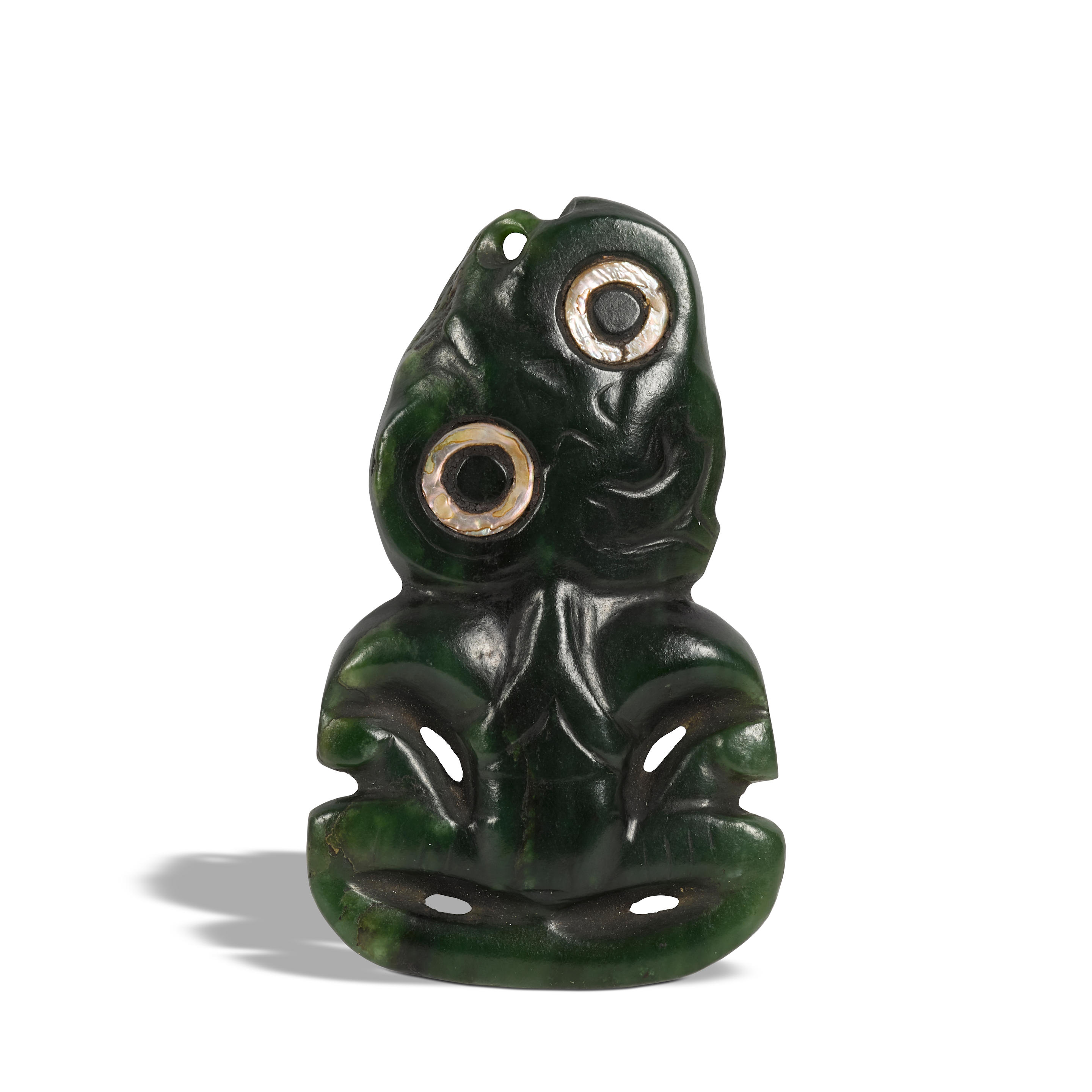
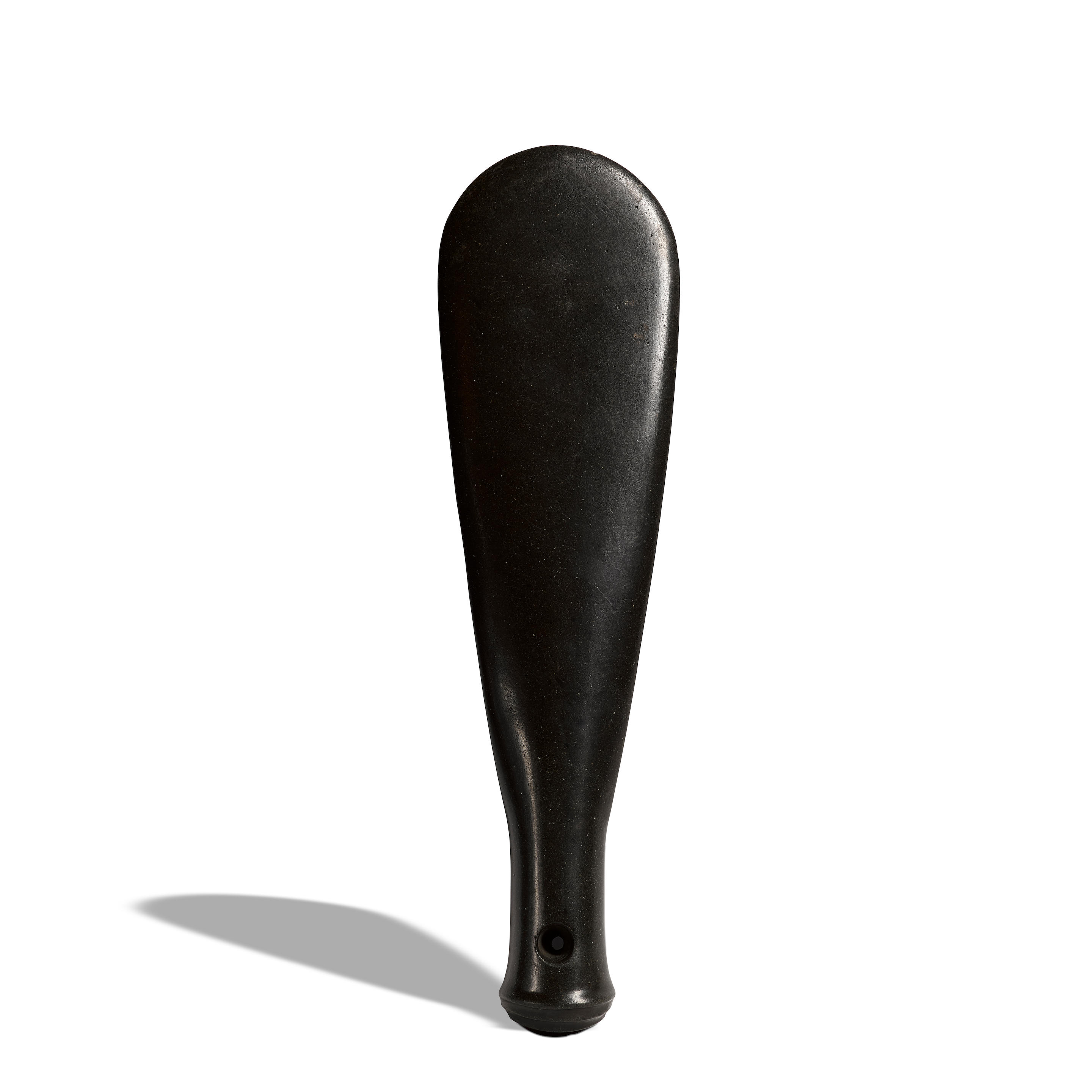
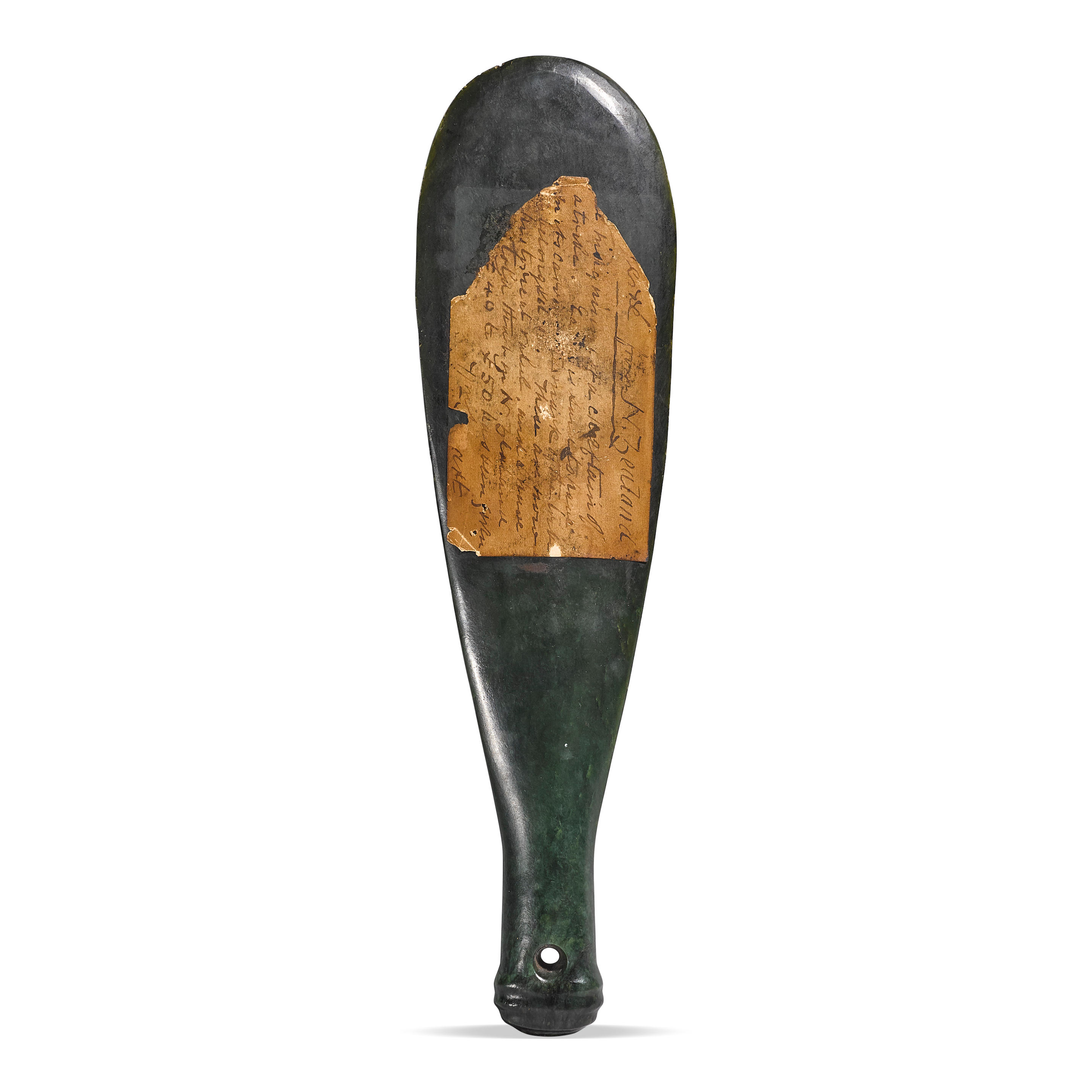



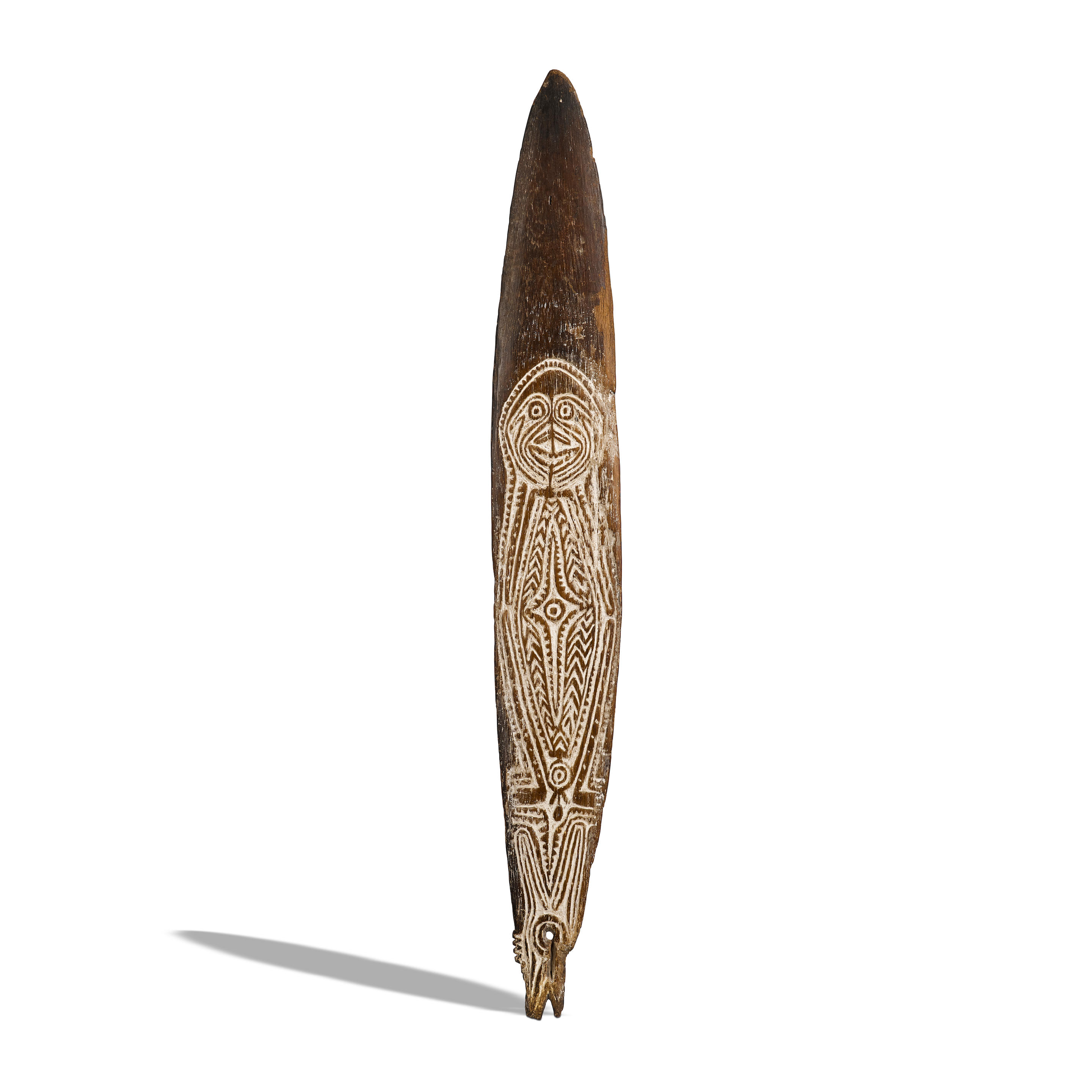
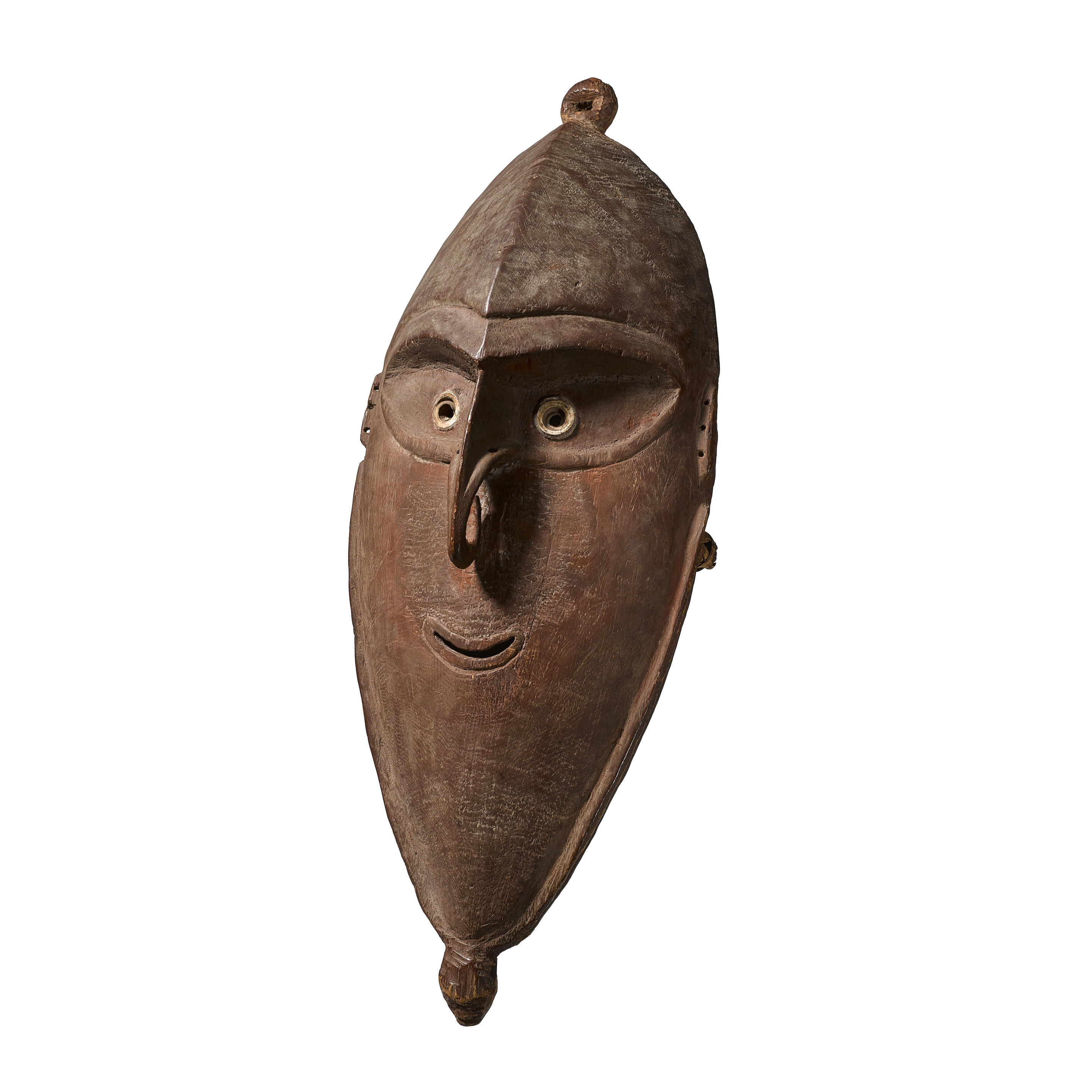
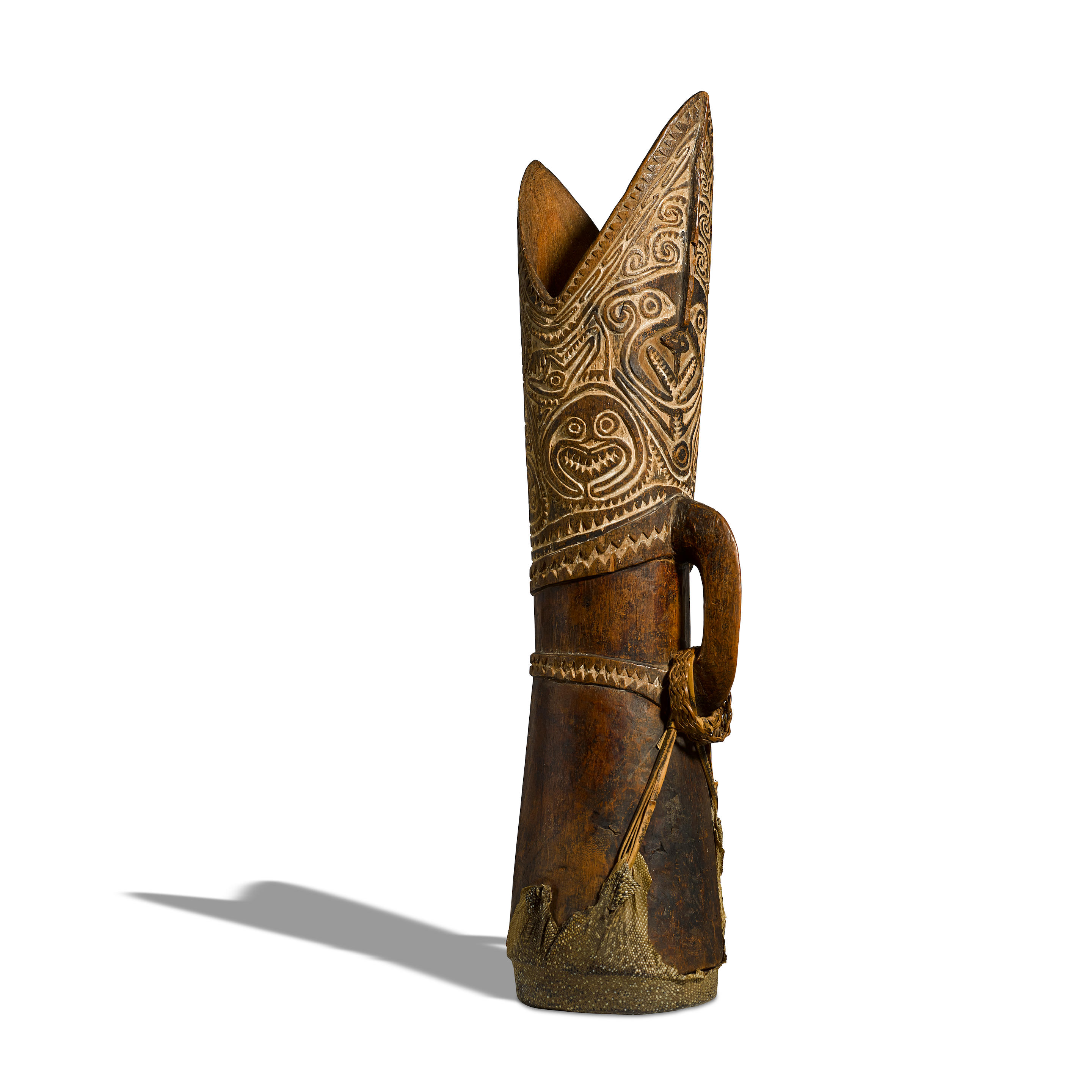
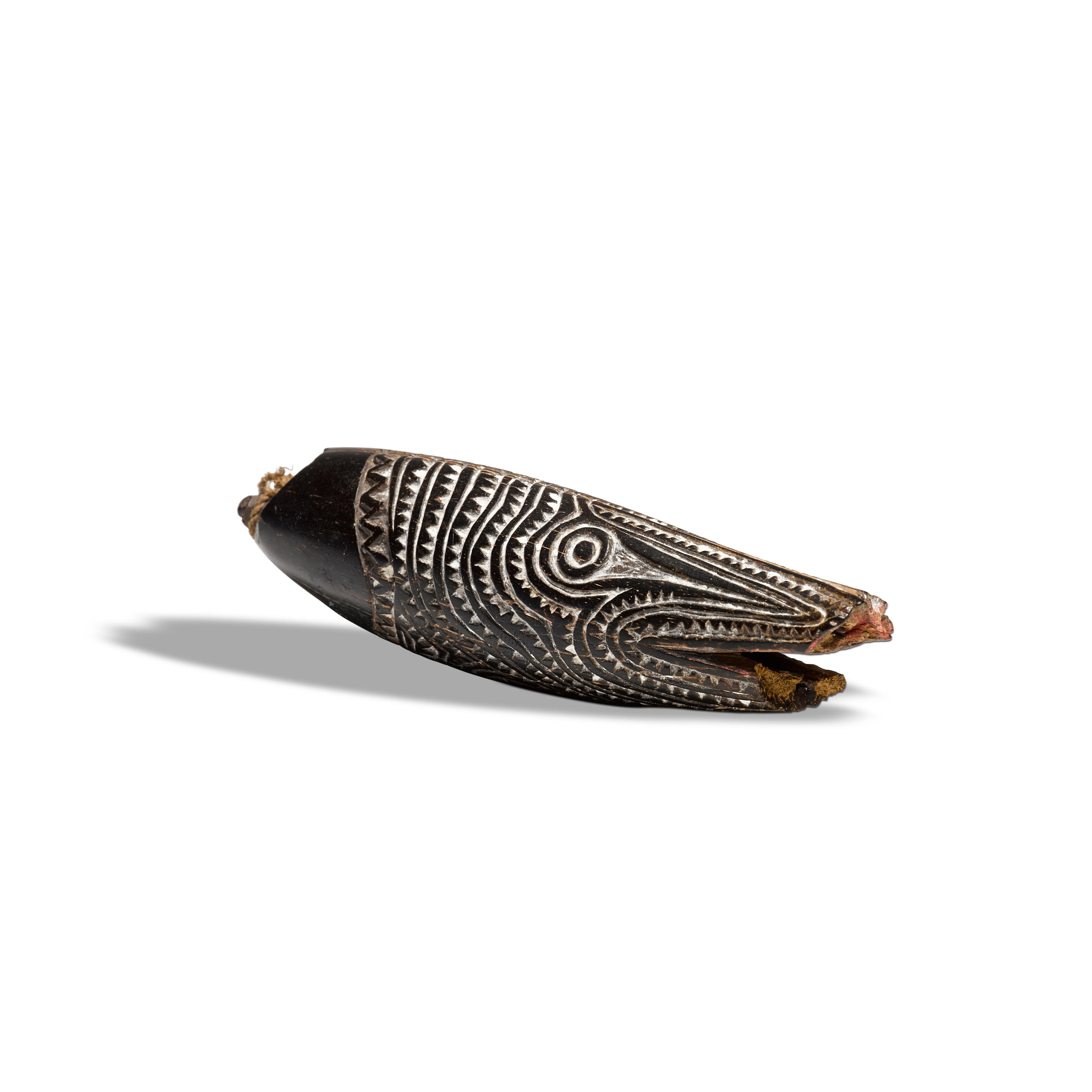
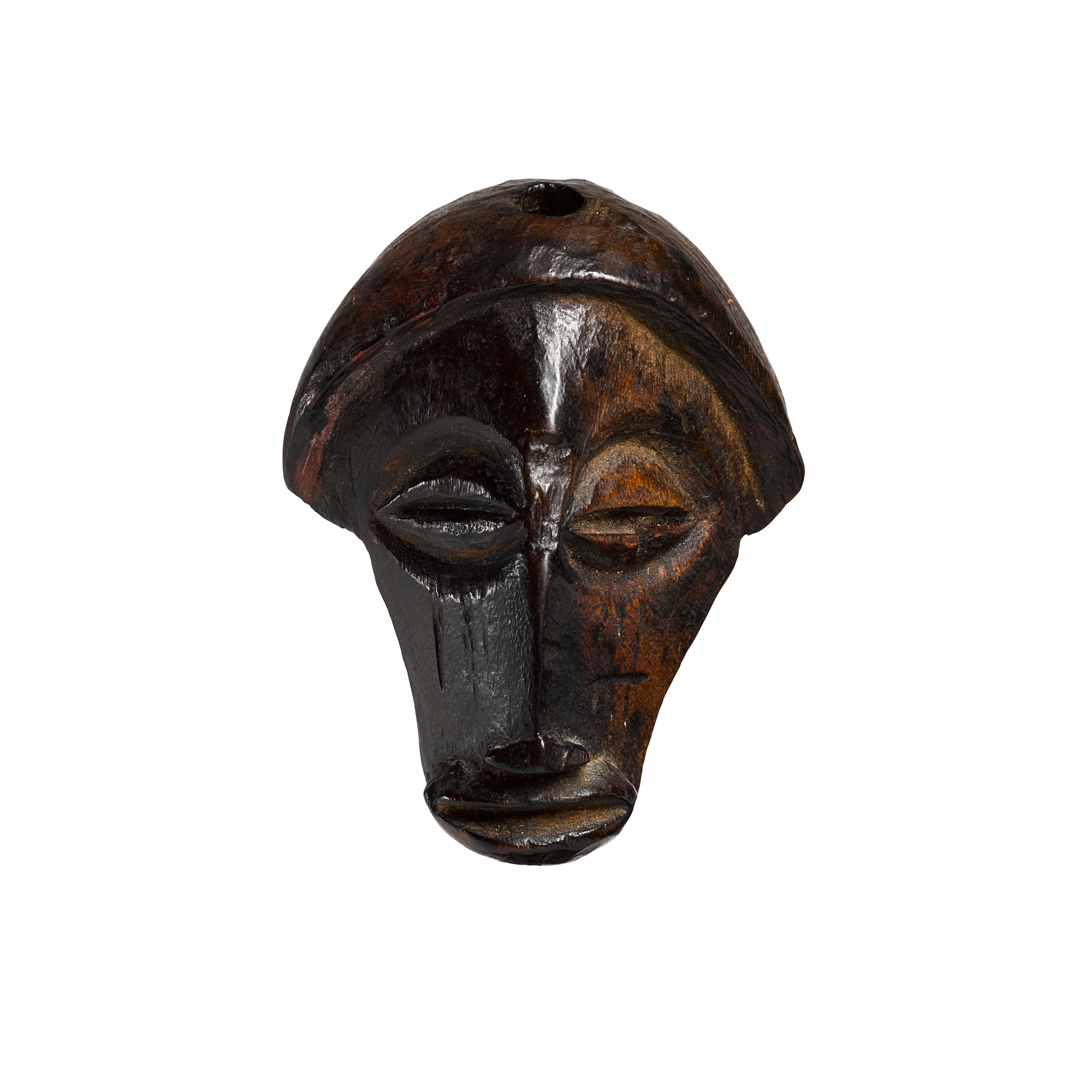

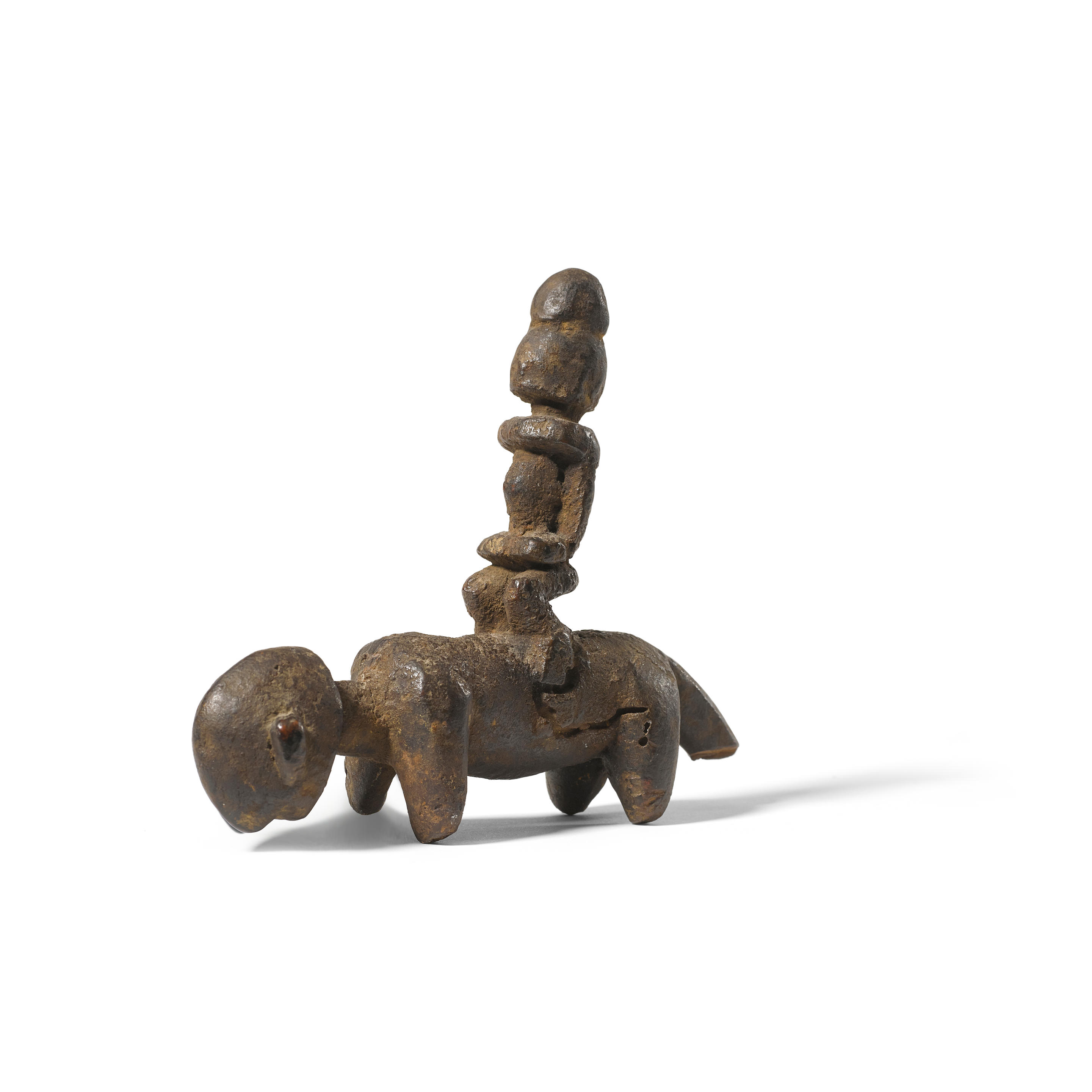
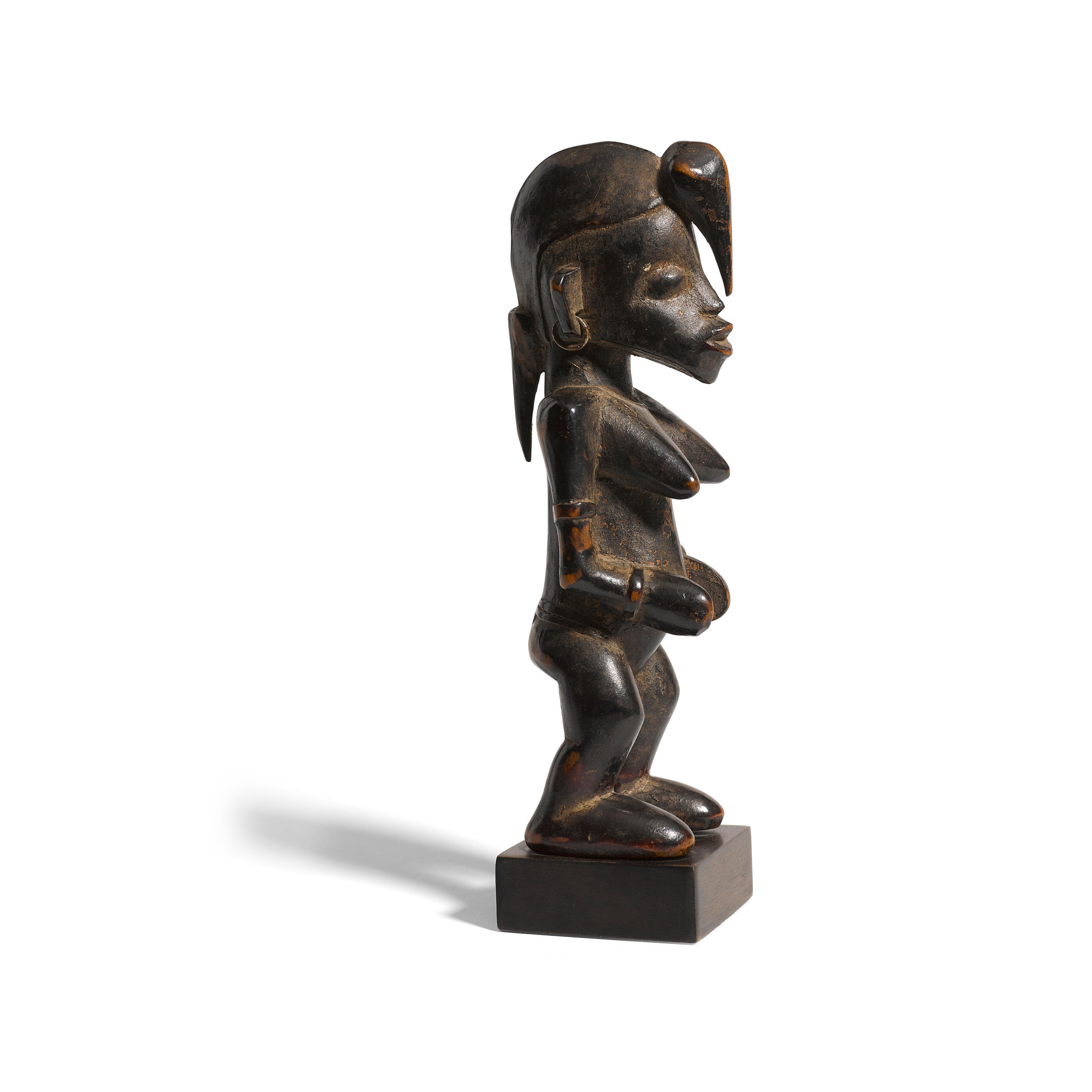
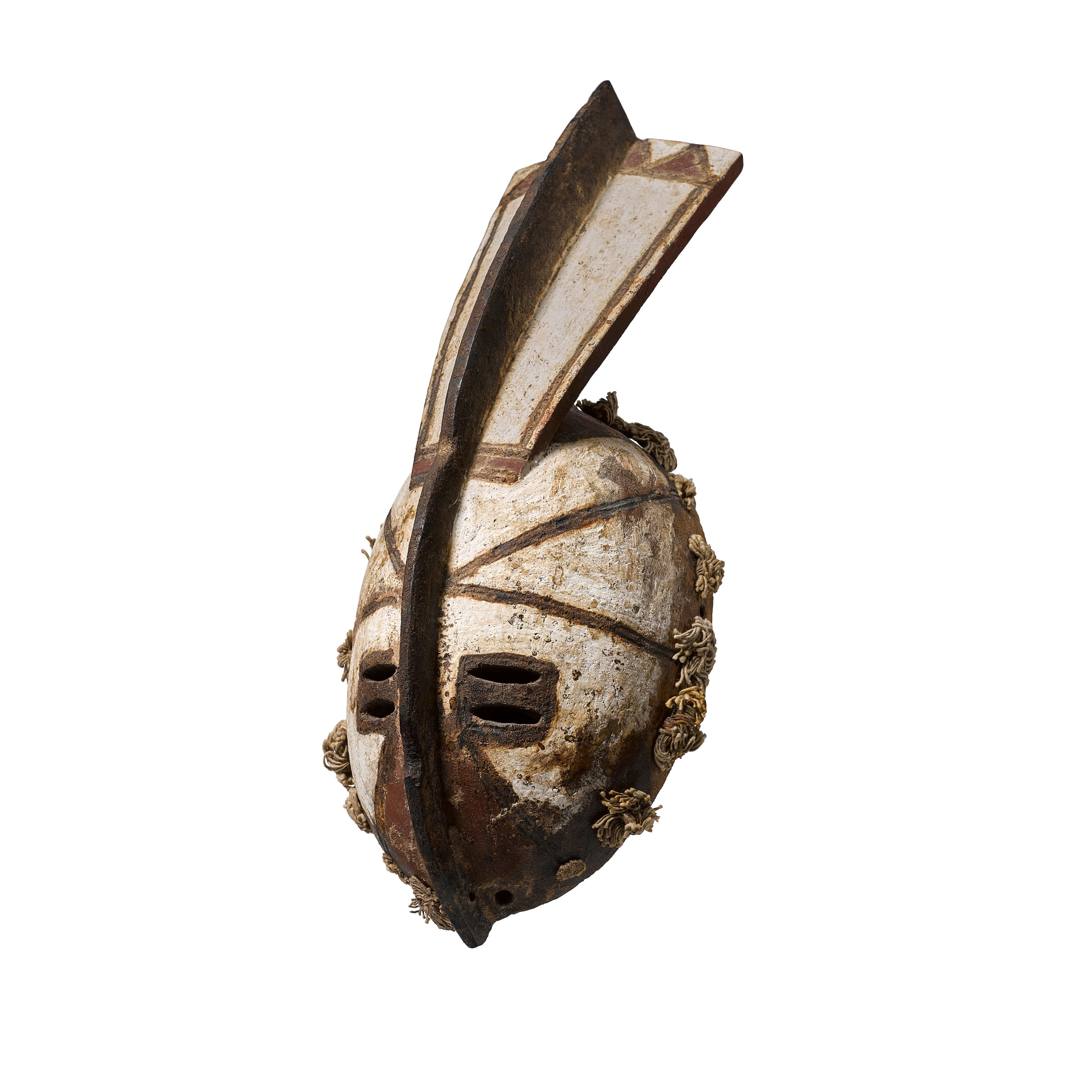
Try LotSearch and its premium features for 7 days - without any costs!
Be notified automatically about new items in upcoming auctions.
Create an alert